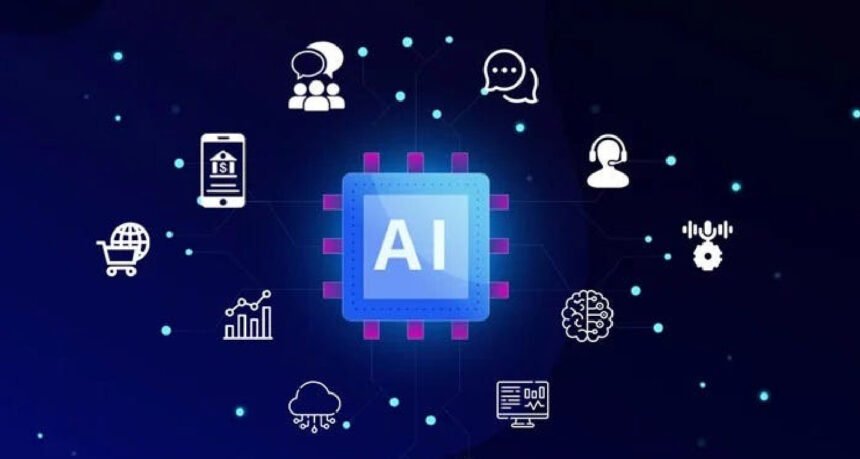Artificial Intelligence (AI) is no longer a luxury — it’s a competitive necessity. Startups and enterprises alike are weaving AI into their product strategies to enhance efficiency, automate workflows, and unlock innovation. But with the flood of AI platforms, frameworks, and APIs available today, selecting the right AI tool for your product roadmap can be daunting.
Whether you’re planning your next mobile app, SaaS platform, or enterprise solution, choosing wisely determines how scalable, efficient, and future-proof your product becomes. For startups exploring MVP development service options, integrating the right AI capabilities early can be the difference between success and stagnation.
This article dives deep into the key criteria, frameworks, and strategic considerations for selecting the perfect AI tool for your product roadmap — balancing innovation, practicality, and long-term ROI.
Why the “Right AI Tool” Matters
AI tools influence every phase of your product lifecycle — from ideation and design to deployment and iteration. The wrong tool can lead to technical debt, inflated costs, and wasted effort.
Choosing correctly ensures:
- Scalability: The solution can handle increased data and user growth.
- Integration: It aligns with your existing tech stack (APIs, databases, cloud infrastructure).
- Performance: It delivers insights or automation efficiently without high latency.
- Maintainability: It’s easy to update, retrain, or replace models as your product evolves.
In short, the “right” AI tool isn’t just about features — it’s about strategic alignment with your business goals.
Clarify Your Product Roadmap Objectives
Before choosing any AI platform, you must be clear about why you need AI and where it fits in your roadmap. Ask these foundational questions:
- What user problem are we solving with AI?
Is it automation, personalization, prediction, or optimization? - What stage are we in?
MVP, growth, or scale — your AI needs evolve with each phase. - What success metrics will define ROI?
Time saved, cost reduction, engagement, retention, or conversion lift?
For example, a healthcare startup might use AI for diagnostics, while a fintech app might use it for fraud detection or credit scoring. Knowing your purpose helps narrow down the AI ecosystem to relevant tools.
Categorize AI Tools Based on Function
AI tools broadly fall into five functional categories. Understanding these helps align them with your roadmap’s milestones:
a. Machine Learning Frameworks
Ideal for building custom models — examples include TensorFlow, PyTorch, and Scikit-learn. These frameworks offer full control over data modeling and training pipelines.
b. Generative AI Platforms
Tools like OpenAI, Anthropic Claude, or Midjourney that create text, visuals, or code from prompts — great for design automation, content creation, and rapid prototyping.
c. AI Analytics & Data Platforms
Solutions like Databricks, Snowflake ML, or Google Vertex AI allow for predictive analytics, data cleansing, and feature engineering at scale.
d. Low-Code / No-Code AI Tools
Perfect for MVPs or startups without large data teams. Platforms like Akkio, Lobe, or Peltarion let you deploy models with minimal coding.
e. Specialized Domain AI Tools
Pre-trained, niche-specific tools (e.g., ChatGPT for conversation, Hume AI for emotion detection, Hugging Face for NLP pipelines).
Each type serves a unique purpose — and your choice depends on whether you’re innovating a core AI product or just embedding intelligence into an existing workflow.
Assess Technical Compatibility
Selecting an AI tool without assessing technical compatibility can backfire. Key aspects to evaluate:
- API Integration: Does it connect seamlessly with your tech stack (React, Node.js, Flutter, etc.)?
- Cloud Support: Is it optimized for AWS, Azure, or Google Cloud — whichever your product uses?
- Data Pipeline Fit: Can it handle your data sources, formats, and scale (structured, unstructured, or streaming data)?
- Performance Constraints: Some AI APIs may have latency or token limits that hinder user experience.
- Scalability & Maintenance: Can the model retrain automatically as data grows?
Compatibility ensures that AI becomes an asset, not an obstacle, as your product matures.
Evaluate Your Data Readiness
AI tools are only as effective as the data that feeds them. Before choosing, evaluate your data quality, volume, and availability:
- Do you have enough labeled data to train custom models?
- Are your data collection processes compliant with privacy regulations (GDPR, HIPAA)?
- Do you have data pipelines set up for real-time updates?
If you’re still validating your product idea, synthetic data or pre-trained models can fill early gaps. Later, you can integrate real-world datasets for improved accuracy.
Cost and Licensing Considerations
Startups often underestimate AI costs — not just licensing, but also compute, data storage, and maintenance. Common pricing models include:
- Pay-per-use APIs (e.g., OpenAI, Google AI APIs)
- Subscription-based SaaS models
- Custom enterprise contracts for dedicated compute infrastructure
To avoid budget surprises:
- Estimate API calls or compute hours required per user action.
- Consider long-term scaling costs beyond MVP phase.
- Review license restrictions for commercial use, data sharing, and intellectual property rights.
Smart founders align cost planning with both short-term MVP goals and long-term growth projections.
Integration With Product Lifecycle Stages
a. During MVP Development
At the MVP stage, the goal is validation, not perfection. You don’t need a complex custom AI stack — use pre-trained or no-code AI solutions to gather insights fast.
Platforms like Hugging Face or OpenAI APIs let startups embed intelligence quickly without heavy infrastructure.
Pairing AI testing with an MVP development service helps you balance innovation with agility — so you validate product-market fit before committing to large-scale AI investments.
b. During Scaling
Once validated, shift from pre-trained to custom AI models that reflect your unique data and value proposition. This stage may require dedicated data pipelines and ML engineers.
c. During Optimization
Mature products integrate AI deeply into user experience — personalization engines, predictive analytics, automation flows — all driven by continuous machine learning retraining.
The Role of Machine Learning Development
Machine learning underpins almost every modern AI capability — recommendation systems, sentiment analysis, image recognition, predictive modeling, etc.
Partnering with specialized machine learning development services helps startups and enterprises architect scalable ML pipelines, choose the right frameworks, and deploy AI models tailored to their product roadmap.
These services can also:
- Build custom algorithms aligned with your KPIs.
- Integrate AI APIs seamlessly into your backend.
- Ensure continuous learning through automated retraining loops.
- Optimize costs using efficient model compression and cloud infrastructure.
Having ML expertise embedded early makes your AI roadmap both sustainable and adaptive.
Security and Compliance
AI tools interact deeply with your data — user behavior, financial details, or health metrics — making data security non-negotiable. When evaluating platforms:
- Ensure encryption at rest and in transit.
- Confirm compliance with ISO 27001, SOC 2, HIPAA, or regional privacy laws.
- Ask vendors about data ownership — do they use your datasets to retrain their global models?
- Implement access controls and audit logs to protect sensitive inputs.
AI without compliance can expose your brand to serious regulatory and reputational risks.
Evaluate Explainability and Transparency
“Black box” AI models make predictions that even their developers can’t fully explain. For products involving sensitive decisions — like finance, healthcare, or recruitment — explainable AI (XAI) is critical.
Look for tools that provide:
- Model interpretability dashboards (e.g., SHAP, LIME visualizations)
- Bias detection metrics
- Confidence scoring for each prediction
Transparency builds user trust and regulatory resilience — vital for long-term brand credibility.
Collaboration and Ecosystem Support
An active community and ecosystem accelerate innovation. When evaluating an AI platform, consider:
- Community activity: GitHub stars, Stack Overflow discussions, and third-party tutorials.
- Vendor support: Dedicated account managers or technical support for integration.
- Plugin ecosystem: Access to extensions, libraries, and compatible APIs.
- Integration with developer tools: CI/CD pipelines, Docker, or Kubernetes support.
A vibrant ecosystem ensures that your AI stack doesn’t stagnate as technology evolves.
Scalability for Future Growth
Your AI choice must scale in both data volume and computational demand. Evaluate:
- Cloud-native scalability (auto-scaling clusters, GPU/TPU support).
- Modular architecture for easy component replacement.
- Ability to handle diverse data types as your product expands.
Future-ready tools minimize migration costs and technical bottlenecks down the road.
Usability and Learning Curve
Some AI tools demand advanced programming and data science knowledge; others offer user-friendly GUIs. Choose based on your team’s skill set:
- Startups with small teams: Opt for low-code AI builders or API-based integrations.
- Enterprises with data teams: Choose flexible frameworks like TensorFlow or PyTorch.
- Cross-functional teams: Use hybrid platforms combining visual interfaces with code extensibility (e.g., DataRobot, Google Vertex AI).
A smooth onboarding curve ensures faster implementation and broader team adoption.
Vendor Longevity and Reliability
The AI landscape is fast-moving — some tools rise and disappear within months. Always check:
- Company reputation and funding stability.
- Client references and case studies.
- Update frequency and version history.
- Clear product roadmap from the vendor.
Selecting a reliable vendor ensures long-term support and avoids disruptive migrations.
Common Mistakes to Avoid
- Chasing hype instead of solving problems. Choose function over trend.
- Ignoring data readiness. Without clean data, even the best AI fails.
- Underestimating costs. Hidden compute and maintenance fees can spiral.
- Skipping human oversight. Always validate AI decisions manually.
- Neglecting scalability. Build with tomorrow’s growth in mind.
The Strategic Advantage of AI-Driven Product Roadmaps
Startups that embed AI in their product roadmaps gain measurable competitive advantages:
- Speed: Automate tasks and deliver updates faster.
- Precision: Base design and business decisions on real-time intelligence.
- Personalization: Tailor experiences at scale.
- Efficiency: Reduce operational overhead through smart automation.
As industries pivot toward “AI-first” models, businesses integrating AI strategically will set the pace for innovation.
Conclusion
Selecting the right AI tool for your product roadmap is more than a technical decision — it’s a strategic investment in your product’s future.
The ideal tool aligns with your roadmap objectives, integrates seamlessly into your tech ecosystem, respects your data privacy obligations, and scales as your business grows. For startups, pairing AI integration with an MVP development service ensures early validation with minimal risk. As your product matures, leveraging machine learning development services transforms your roadmap into a living, learning ecosystem that continuously adapts to user needs.
In a rapidly evolving AI landscape, the winners won’t be those who adopt AI fastest — but those who adopt it wisely. Choose tools that serve your vision, not the other way around.
For More Information Visit Dotmagazine









